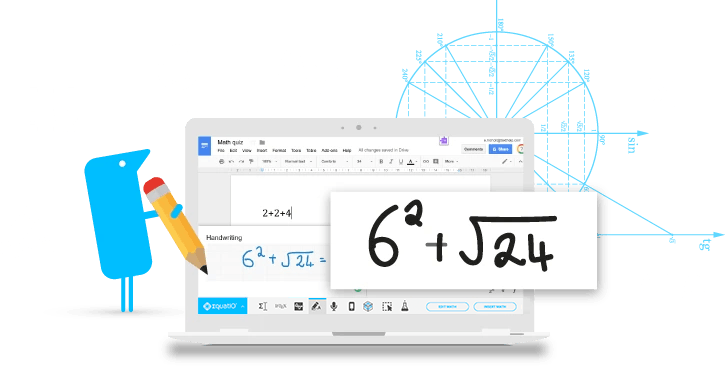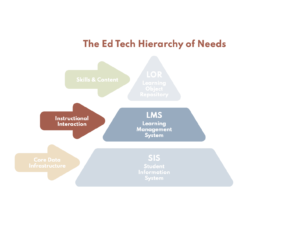How EdTech Tools Can Make Math More Accessible and More Personal for All Students
Key Points
-
The increased use of digital math tools is giving students the flexibility to choose how they learn. With this technology, students are now able to choose how they learn and share their knowledge to improve learning outcomes.
-
Digital tools not only allow personalized learning, but also personalized learning spaces.

By: Louis Shanafelt
When you think about math, you probably think of writing equations and answers with a paper and pencil. That’s because math has been stuck in the analog world, especially in the classroom. While other subjects, like writing, have long moved into the digital world, math has mostly stayed untouched by tech.
Over the last 20 years, I’ve seen how education technology can change the classroom.
When I was a teacher, I saw how much time it saved teachers on tasks as simple as grading assignments. As the tools improved, I saw how it gave students freedom in how they were able to show their knowledge.
But it wasn’t until the pandemic that I truly saw teachers using digital math tools on a larger scale. Teachers have now realized the true benefits of using them, some for the first time. I have seen how EdTech tools have made a positive impact on thousands of teachers and students.
Using EdTech Tools to Personalize Learning in Mathematics
Math has remained untouched by tech for several reasons. Math symbols are complex, teachers have large inventories of worksheets, and students need to “show their work”. It has been difficult, if not impossible, to create a digital equivalent. Until now.
Digital math tools are leveling up and changing the game for both in-person and virtual learning. A teacher’s job is to make sure all students reach their learning goals. By giving students the flexibility to choose how they learn, they now have the opportunity to show their knowledge and improve learning outcomes.
If you’re thinking of incorporating a personalized learning strategy into your math curriculum, digital tools are a great place to start. There are many EdTech tools that can help with this learning approach.
When it comes to choosing the right tool, look for one that has been designed with Universal Design for Learning (UDL) principles in mind. These principles improve and optimize teaching and learning for everyone. They also reduce barriers and maximize learning opportunities.
By choosing a UDL tool, you’ll make sure that your EdTech supports a wide range of learning styles and preferences. Through these tools, students can engage with math content in the way that best suits their unique needs. This can be through written work, visualizations, audio, collaboration, and more.
It wasn’t until the pandemic that I truly saw teachers using digital math tools on a larger scale. Teachers have now realized the true benefits of using them, some for the first time. I have seen how EdTech tools have made a positive impact on thousands of teachers and students.
Louis Shanafelt
Using these types of digital tools, students can show their knowledge in their own way, at their own pace. Similar to how every student learns differently, they may also show their understanding differently. Tools that support UDL allow students to be creative while still reaching their learning outcomes.
Personalization in math can also help to create a more accessible learning environment. For example, some tools allow students to hear math problems read aloud. These tools make it easier and more engaging for those with learning or visual hardships. It can also help students who learn best by hearing. Whichever method a student chooses to use, they should still come to the same result as their peers.
Tools like EquatIO can create different types of math spaces for different types of learners. Teachers can use tools like this to take away any pressure from receiving a different assignment than their peers. This is just one example, but there are many other digital tools that make deploying specialized assignments easier for teachers.

EdTech Tools are the Future of Mathematics in the Classroom
Technology has slowly integrated more and more into the classroom. I have seen the impact it can have on student learning. It can enhance the entire classroom experience for all users. I encourage you to search for a math tool that can support all of your students and their individualized learning approaches.
Digital tools, whether it be for math, reading, or writing, can help teachers rethink the classroom and allow students to express themselves with confidence. We are just scratching the surface.
Louis Shanafelt is a Product Manager at texthelp.





Veena Reddy
Completely agree with what you've said in terms of increased usage of digital tools for mathematical applications. It helps improve the ability to solve problems easily and also helps in better engaging. But as you said there is more to this and there are many more things we have to discover.